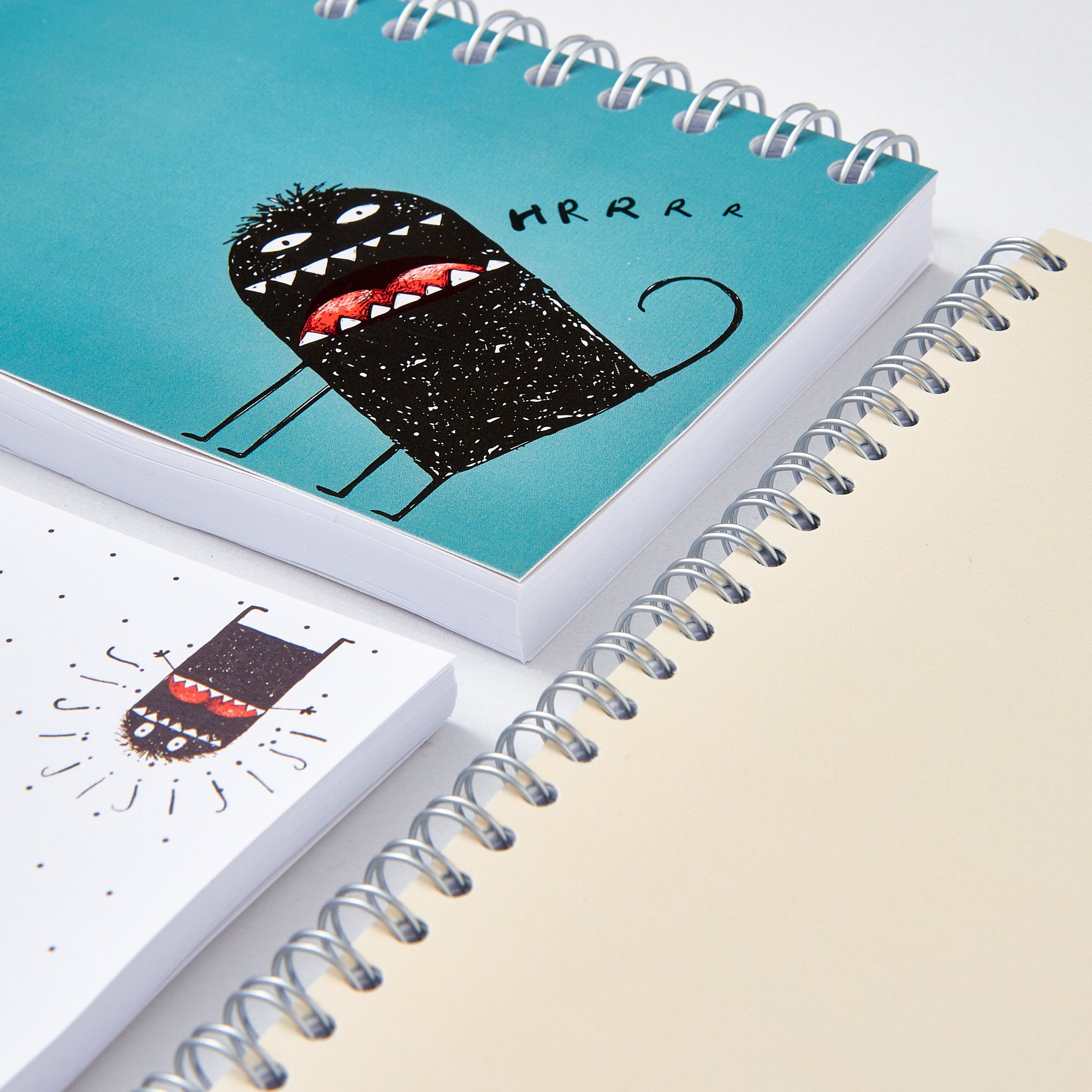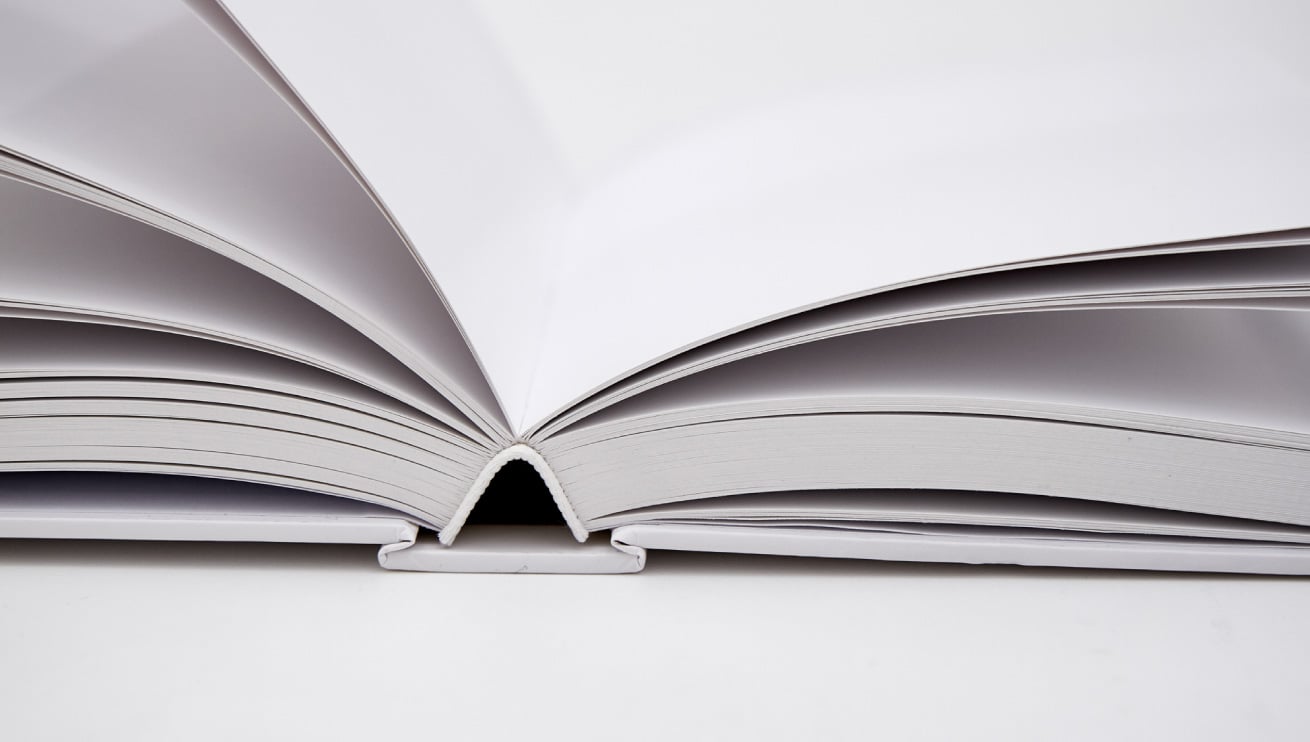Table of Contents
Binding is a crucial phase in producing any printed publication. It’s not just a question of holding together the pages you’ve printed, it’s also about giving shape to a product, ensuring it lasts and making it easy for readers to use. Different types of binding affect these factors in different ways: some binding techniques ensure that the printed product lasts longer, some are cheaper and quicker, while others allow for very specific uses… think calendars or diaries!
Understanding how to bind your publication and choosing the most suitable type is, therefore, very important. We’ll explain four of the most common binding methods used today —stapled, wiro, perfect and sewn — and give you tips on how to use them for your publications.
Stapled binding: fast and simple

Stapled binding is one of the simplest, fastest and cheapest types of binding. It involves printing sheets on both sides, placing them on top of one another, adding a cover, and inserting two staples in the fold. As simple as that!
This makes stapled binding particularly suited to publications with relatively few pages: compared to other methods, it’s possible to staple-bind from as few as 8 pages up to around 40 pages. Lightweight papers are often used, but it’s also possible to use heavier papers, up to 300 gsm.
It’s the binding to use if you have to produce cheap publications in a short time. For example, a magazine or a company catalogue that isn’t too thick: not too much text and lots of graphics. Or the classic instruction leaflet, information brochure or a festival programme in A5 or A6 format, the perfect pocket size. Do you know the difference between leaflets and flyers? If you don’t, you can find your answer here!
Pixartprinting offers 24-48 hour delivery for printed products with this type of binding.
Perfect binding: a method commonly used for books

Perfect binding is a method best suited to publications with more content than those that are typically staple-bound. This means it’s most commonly used for books, and is again one of the fastest and cheapest types.
It involves gluing a cardboard cover to the spine. Before gluing, the sections – groups of four, eight, sixteen or thirty-two pages – are milled and notched along the fold. This roughs up the spinal edge, helping the glue to penetrate better and the binding last longer.
You can choose this type of binding if the spine of your publication is at least 4 mm thick. It’s a binding method suitable for publications of at least 32 pages and is most commonly seen in books . It’s worth considering if you’re printing textbooks, brochures with lots of text or thick magazines. And if you’re wondering how to bind your dissertation or art-exhibition catalogue, then this is probably the type of binding for you.
This type of binding is particularly fast and cheap – Pixartprinting offers online printing and perfect binding in 24-48 hours – although, if you want a durable product, we advise you to check out one of the next types of binding examined in this post: sewn binding.
Wiro binding: perfect for calendars and diaries

Wiro is one of the quickest, most practical binding methods, and also one that is very noticeable aesthetically.
Printed sheets are placed on top of one another and holes are punched in the margin. A metal spiral is then inserted to hold the sheets together. The advantages? Using a spiral allows the publication to be opened up to 360 degrees, and very thick pages, or even cardboard, can be used.
Of all the types of binding, this is best for creating calendars, ledgers, catalogues, musical scores and, last but not least, A4 or A5 diaries. This type of binding can also be enhanced with very thick paper to create product datasheets that are durable and practical for carrying around and showing to customers.
This too is a very quick, cheap type of binding: Pixartprinting offers 24-48 hour delivery for printed products bound with wiro.
Sewn binding: a premium finish

Sewn binding is more advanced than the other types of binding we’ve looked at so far: this technique is especially suitable for high-quality products that need to last.
As with perfect binding, sheets are grouped into sections and glued to the cover. But before being glued, they are sewn together in the centre using cotton, hemp, linen or synthetic thread. Sewing ensures a more durable hold and greater resistance to wear compared to perfect binding.
Of all the types of binding we’ve described, this is the most professional, especially when it comes to readers or users who appreciate quality craftsmanship. That’s why this is the best binding method if you are producing books for graphic designers or illustrators. The premium finish achieved with sewn binding would also be perfect for producing a high-end company catalogue or particularly fine books. If you’re wondering how to bind your comic or manga, you’re probably in the right place: this binding technique is being increasingly used for comics and graphic novels.
Compared to other binding methods, however, production times are longer. Pixartprinting offers 7-day delivery for products with sewn binding.
These are the most common types of binding used today. Have you already tried one? And what type of binding do yo

